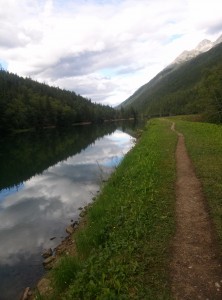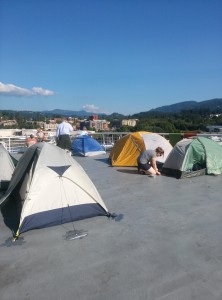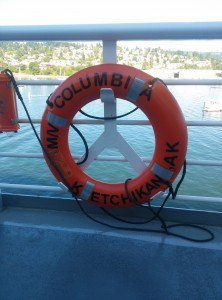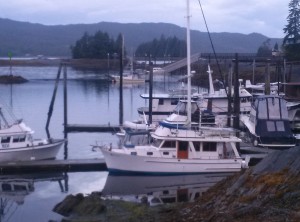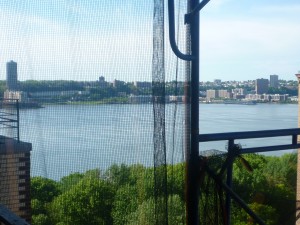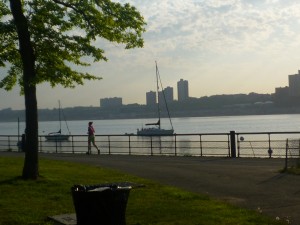Gentle Reader,
A dear friend and hiking companion was talking with me yesterday as we climbed to the saddle above Pratt Lake in the Snoqualmie Pass section of the Cascade Mountains. Her husband, an athletic 71 year old has worn out his hip and finally, after months of thinking it was only a sore knee, agreed to have hip surgery. His doctor is promising him a speedy recovery from his arthritis, so he will back on the tennis court and out fly fishing in a matter of weeks, not month. Curious about this approach, I researched it and pass along a fascinating article from the New York times, published in March of this year.
A New Approach to Hip Surgery
By PETER JARET
Larry Kufel’s surgeon, Dr. Joseph T. Moskal, used the anterior technique for his hip replacement. Mr. Kufel said he was back at work the second week after the operation.
Kyle Green for The New York Times
Larry Kufel’s surgeon, Dr. Joseph T. Moskal, used the anterior technique for his hip replacement. Mr. Kufel said he was back at work the second week after the operation.
Larry Kufel had always been an active man, tall and rangy, who worked out regularly and picked up basketball games at the gym. But age was taking a toll on his joints, and it had become clear that he needed a hip replacement.
“It got to the point, if I did any exertion, even getting out of a chair, it felt like the muscle was tearing away from the bone,” he recalled.
Still, Mr. Kufel, 63, a financial controller in Roanoke, Va., worried that conventional hip replacement surgery would mean a long, painful recuperation. Instead, his doctor proposed an alternative that is gaining popularity across the country, an operation that many surgeons say helps patients recover more quickly.
Mr. Kufel was amazed by the results. “I was back to work the second week after the operation,” he said. “By the fourth week, I was doing a spin class at the athletic club.” A year later, he’s cycling, lifting weights, and even playing racquetball.
“I feel like I never had surgery,” he said.
The procedure that Mr. Kufel received is called anterior hip replacement. The surgeon makes the incision at the front of the hip instead of through the buttocks or the side of the hip. This approach permits the doctor to reach the hip socket without cutting through major muscle groups. Proponents claim that the procedure results in less pain and fewer complications for patients than standard hip replacement.
“We’re seeing more and more data that patients recover quicker, discontinue use of a cane or walker sooner, and have a quicker return to a normal gait,” said Dr. Joseph T. Moskal, chief of orthopedic surgery at Virginia Tech Carilion School of Medicine and Research Institute, who was Mr. Kufel’s surgeon.
Surgeons have used an anterior approach to perform emergency hip repairs for decades. Anterior hip replacements were first described in the United States in the 1970s and have gradually gained popularity. No one knows how many surgeons currently use the new approach, but at a recent meeting of hip and knee surgeons, an informal survey suggested that as many as 20 percent of hip surgeons are now performing anterior hip replacements, according to Dr. Moskal — up from “less than a handful” in 2005. With more than 400,000 total and partial hip replacements performed each year in the United States, a change in technique would eventually affect millions of Americans.
Proponents note that because the operation spares muscles, patients don’t need to limit their movements during the recovery period.
“You can bend over,” said Dr. Robin N. Goytia, an orthopedic surgeon in Houston. “You can reach down to the floor. You can cross your legs — all things that patients with a posterior approach have to be careful about for a while because they can dislocate the hip.”
Surgeons who perform the procedure also say the anterior position makes it easier for them to use fluoroscopy, a real-time X-ray technique that allows doctors to precisely position the implanted artificial hip. That, in turn, may allow artificial hips to last longer.
And since the major muscle groups of the hip are left untouched, there appears to be a lower risk that the artificial joint might pop out, or dislocate, said Dr. Francis B. Gonzales, an orthopedic surgeon and assistant clinical professor at the University of California, San Diego.
Conventional hip replacement techniques have a dislocation rate of about 1 percent. Preliminary studies suggest that the rate following anterior surgery may be less than one-third of that.
Yet reports of the benefits are mostly anecdotal, based on surgeons’ experience. No large randomized studies have been done comparing the outcome of anterior surgery with other approaches. And there are downsides.
Anterior hip replacement often takes longer to perform and can result in more blood loss. Some patients experience temporary numbness in the thigh afterward.
Because the operation is tricky to perform, there is a steep learning curve for physicians, which partly explains why it hasn’t been taught as widely as other approaches in medical schools. Special operating tables have been designed that make the surgery easier to perform, but many medical centers don’t have them.
Even surgeons who perform the new procedure are quick to say that it isn’t “minimally invasive,” the term often used in marketing materials.
“We can do any of these approaches through a small incision, but it’s a little like assembling a ship in a bottle,” Dr. Goytia said. “If you’ve ever seen a hip replacement, it’s not a tissue-friendly surgery. We have to do a lot of bone work and cuts, and we use a lot of power tools.”
Despite a rising chorus of support, not all orthopedic surgeons are convinced that anterior hip replacement offers significant advantages over the traditional approaches.
“As far as we can tell from the data, it doesn’t appear that the surgical procedure is as important to recovery as the pain management protocol, the rehabilitation protocol, and a patient’s baseline pain and functional status,” said Dr. Kevin J. Bozic, professor and vice chairman of orthopedic surgery at the University of California, San Francisco.
In the end, he said, a surgeon’s skill and experience are by far the most important factors. Doctors who do hundreds of hip replacements a year typically have very low complication rates, no matter what approach they favor.
“Most surgeons become comfortable with a single surgical approach and they perfect that over time,” Dr. Bozic said. “You definitely don’t want to go to a surgeon trained in the posterior approach and insist on an anterior approach.”
His advice? “Find an experienced surgeon and a medical team you trust and feel comfortable with, and leave the technical issues up to them.”
This post has been revised to reflect the following correction:
Correction: March 25, 2013
An article on Tuesday about the anterior approach for total hip reconstruction described the history of the operation incorrectly. The technique was first described in the 1970s, at a medical conference; anterior hip replacements were not first introduced in the United States about 10 years ago.
A version of this article appeared in print on 03/19/2013, on page D5 of the NewYork edition with the headline: New Approach to Hip Surgery.
After surgery certain dietary supplements can be helpful with swelling and numbness. Please see my post http://www.grandmabetsybell.com/2013/03/07/watch-out-for-the-metal-detectors/ for details.
Sometimes it is important to back away from a dogged determination to avoid surgery at all costs , get a second opinion, and move forward.
If this has been helpful, feel free to share. And by all means, let us hear your comments.
Be well, Do well and Keep Moving
Fondly, Betsy
www.grandmabetsybell.com/blog/
www.EmpoweredGrandma.com
www.DoWellWithBetsy.com
